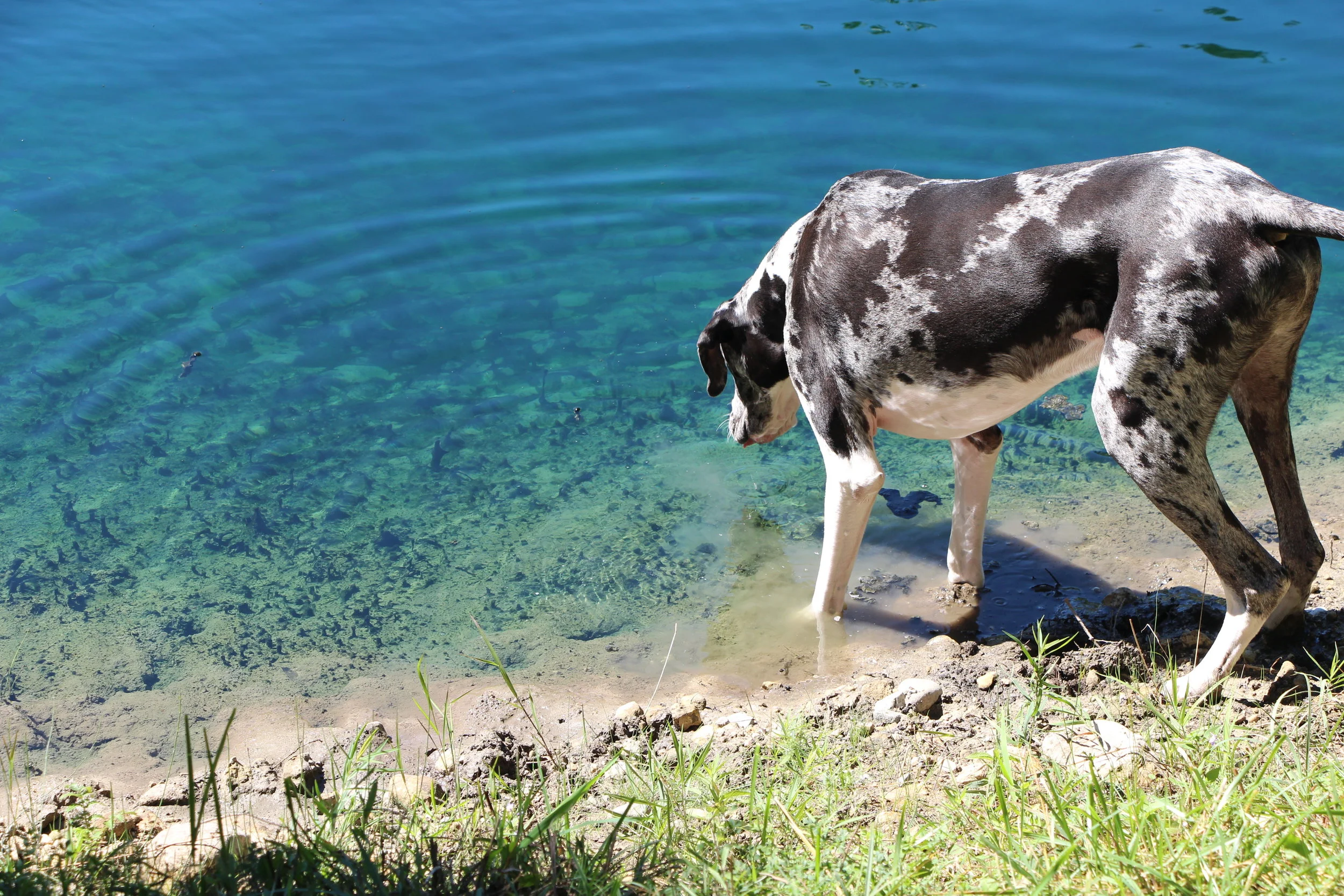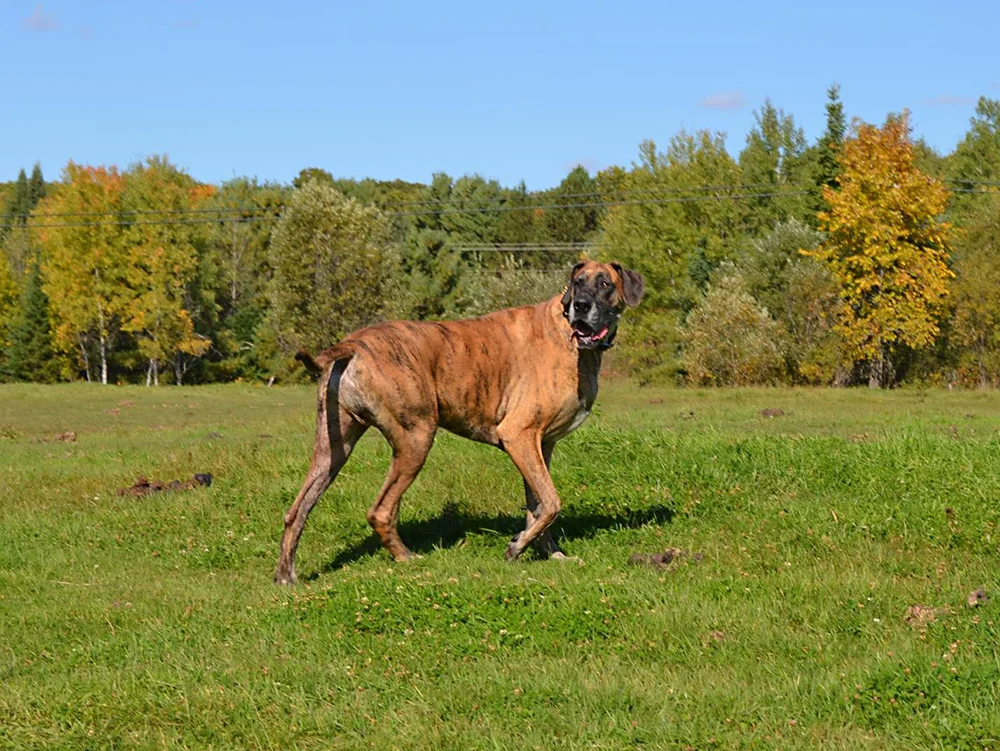ALL ABOUT GREAT DANES
Want to know more about Great Danes? In an effort to help you determine if a Dane is right for you, we've included some general information below about these wonderful dogs.
Great Dane - Canis lupus familiaris
The Great Dane is a German, domestic breed (Deutsche Dogge - or German Mastiff). They are known for their large bodies and great height.
As one of the world's tallest dog breeds, the current world record holder for tallest dog is a Great Dane called Zeus (died Sep. 2014), who measured 44" from paw to shoulder. However, don't let their size fool you, Great Danes are well known for their friendly nature and desire to seek physical affection with their owners.
Great Danes are often referred to as "gentle giants". They are eager to please and get along well with other dogs, animals and humans. As you acclimatize to having such a large dog in your home, remember visitors and new comers will take some getting used to such a large presence.
Great Danes can be very intimidating and can be an imposing figure especially if you are an intruder. The breed once had a ferocious reputation which fanciers required during the early days when they were used to hunt wild boar. However, this has been largely bred out of them. Nonetheless, a Great Dane will not hesitate to defend their family and are more than capable of doing so.
Great Danes are very affectionate and will seek out your attention and often your couch as they can demonstrate lapdog tendencies. But this, in part, is what makes the breed so endearing!
Size
Male Great Danes are on average 30 to 36 inches tall and can weigh 120 to 200 pounds while females can be anywhere from 28 to 32 inches tall and weigh 100 to 130 pounds.
Health
Great Danes are very robust dogs and are generally quite healthy. But like any breed, they're prone to certain health conditions. Not all Great Danes will get the diseases listed below, but it's important to be aware of them:
- Hip dysplasia
- Elbow dysplasia
- Hypothyroidism
- Gastric torsion
- Bone cancer
- Heart disease
- von Willebrand's disease
Care
Ideally, Great Danes need moderate exercise - approximately 30 to 60 minutes of rigorous daily exercise is ideal. They do need some room to move around when indoors and preferably they should have a fenced yard when outdoors and daily walks.
A small apartment or condo is not suited to the breed. Danes are not well suited to crates.
Like all dogs, Danes can get cold in the winter and should never be left outside due to exposure. Their short hair, and sometimes sensitive skin, do not provide the thick, thermal protection of some other breeds.
Feeding
Always feed a Great Dane high-quality dog food with a well balanced, nutritional composition. Never feed your Dane "grocery store" or "generic" dog food. Provided they are fed good food, supplementing is generally not necessary. Below are some daily, recommended amounts you should feed a Dane (remember to always consult your veterinarian to ensure satisfactory caloric intake without exceeding their individual, daily requirement):
- Females 8 months to 1 year old: 5 - 8 cups
- Males 8 months to 1 year old: 6 - 10 cups
- Female adolescents: 8 cups
- Male adolescents: 9 - 15 cups
- Female adults: 6 - 8 cups
- Male adults: 8 - 10 cups





